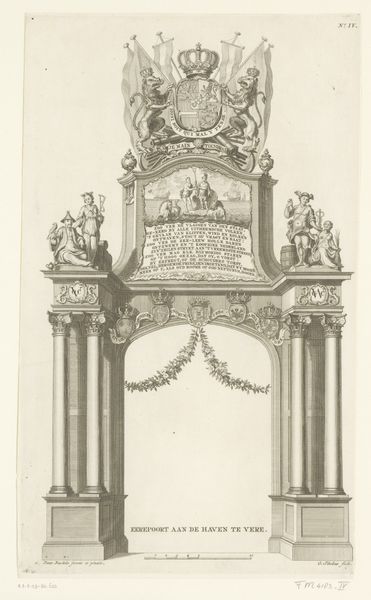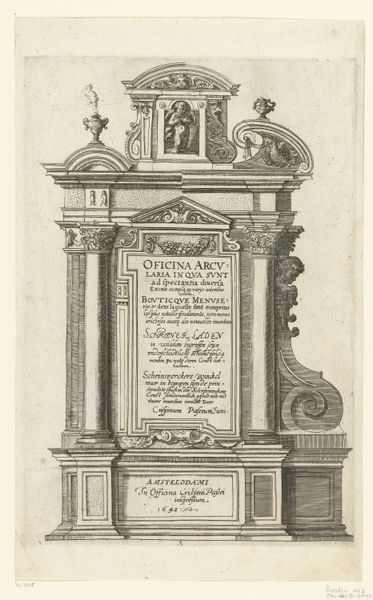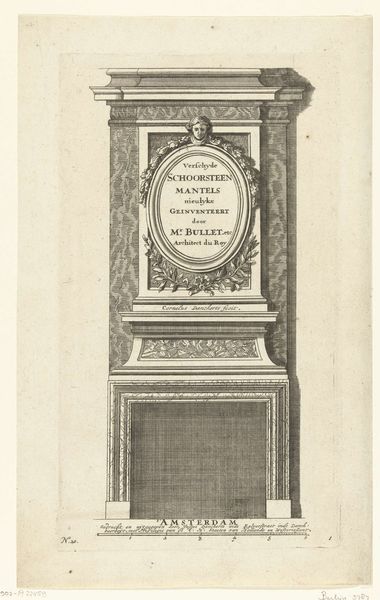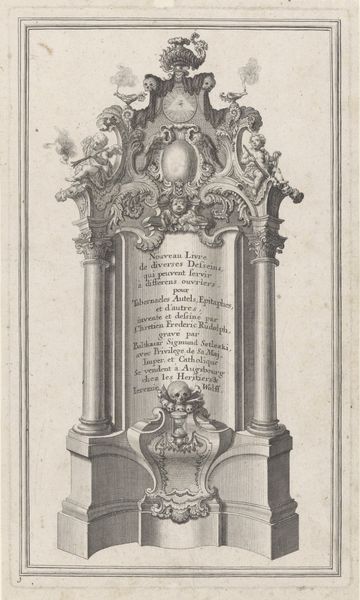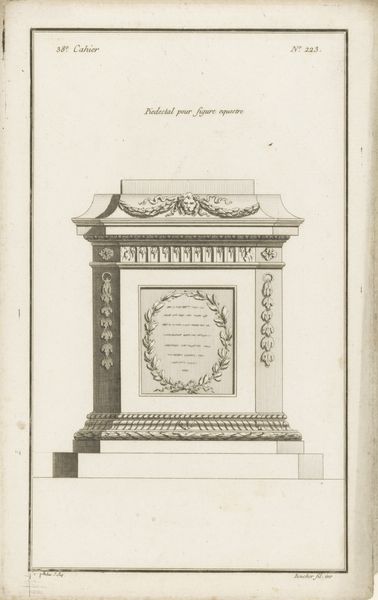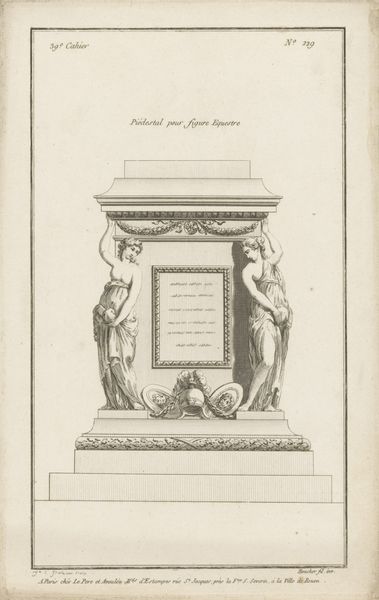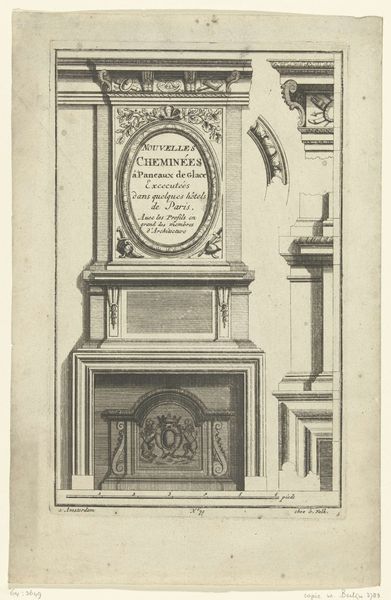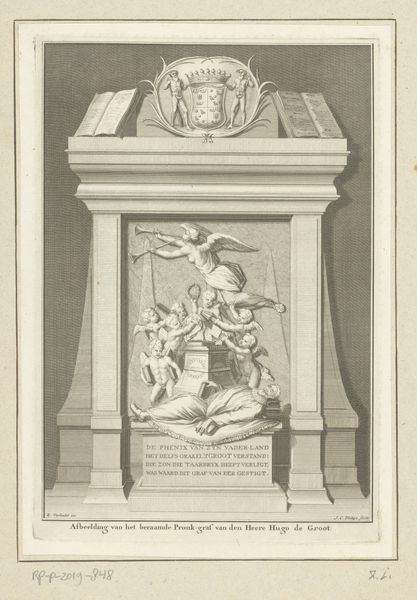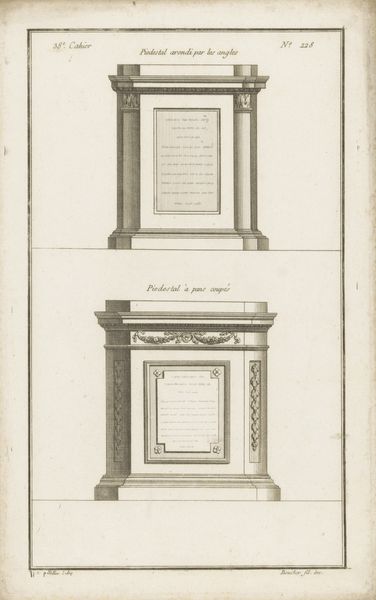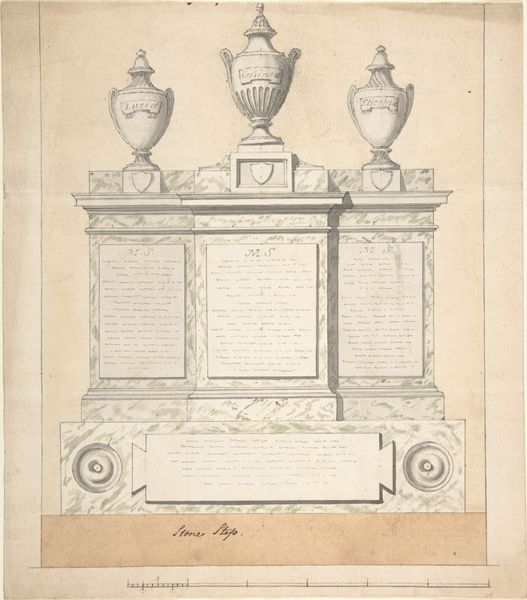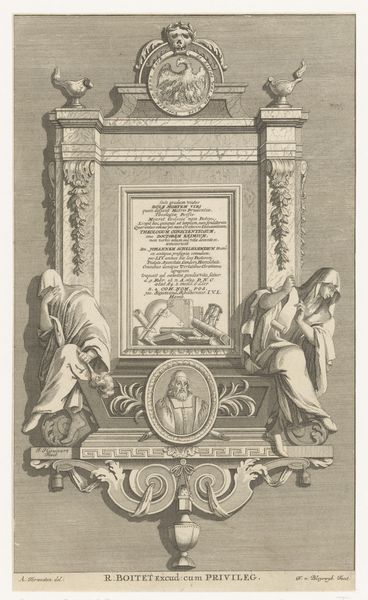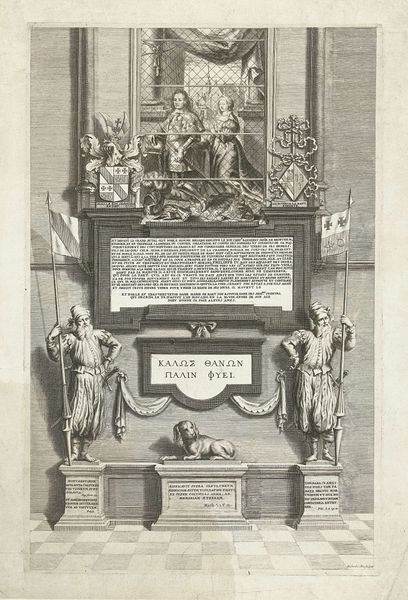
Dimensions: height 175 mm, width 101 mm
Copyright: Rijks Museum: Open Domain
Caspar Jacobsz Philips created this etching of the epitaph of Antoni van Leeuwenhoek sometime after the scientist’s death in 1723. The image encapsulates the social and institutional values of the Dutch Republic at the time. Epitaphs were commissioned to commemorate wealthy and influential members of Dutch society, and were usually erected in churches or other public spaces. The inclusion of cherubs and a coat of arms, visual markers of wealth and status, were familiar cultural references. The text itself memorializes Leeuwenhoek's discoveries using microscopes and his membership in the Royal Society of London, an institution that would give him international recognition. The artwork's existence points to the cultural value placed on scientific discovery and on the institutions that supported it. Close examination of such epitaphs and other commissioned artworks provides valuable insights into the priorities of the Dutch Republic's elites. Historical archives can help contextualize the role of art in shaping and reflecting social values.
Comments
No comments
Be the first to comment and join the conversation on the ultimate creative platform.
